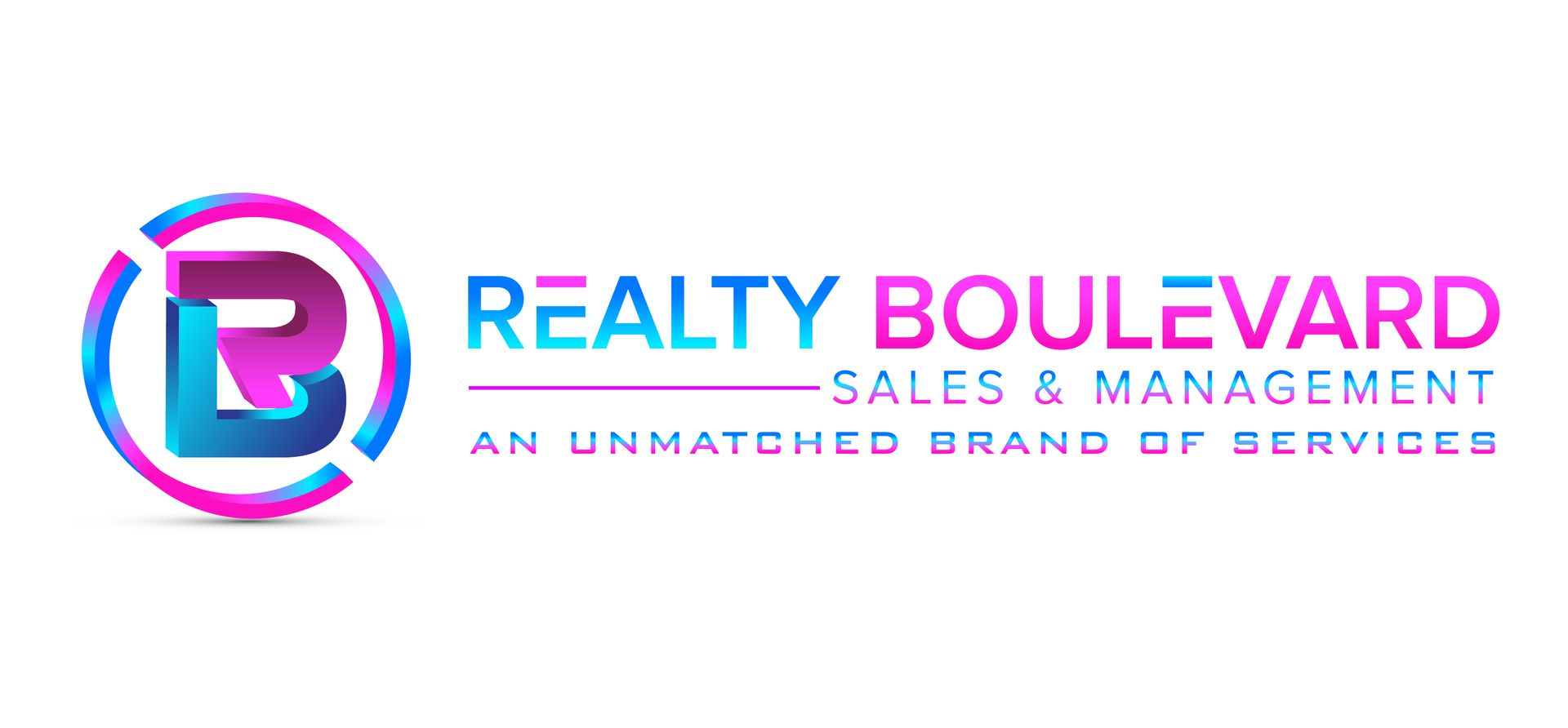Top Tips for Homebuyers and Sellers in 2023
The Lighter Side of Real Estate • January 24, 2023

So, the question is, how do you navigate this new housing market? Or, in other words, if you want to successfully buy or sell a home in 2023, what do you need to know?
A recent video from realtor.com outlined must-know tips for buying or selling a home in 2023, including:
- Connect with a real estate agent. The right real estate agent can be a huge asset to your home search or sale of your house. If you’re thinking about buying or selling, do your research and get in touch with an experienced agent in your area. They can help you understand the market and put together a game plan to successfully sell your home and/or find the property of your dreams.
- Get your finances prepared. If you’re applying for a mortgage, you’ll want to get your finances in order before you submit your application. Do your research to find out what you need to do to qualify for a loan and what documentation you’ll need to submit with your application—and then take the necessary steps to meet those qualifications and get your paperwork together.
- Adjust your expectations. If you’re selling your home, keep in mind that today’s market isn’t the same as it was a few years ago. Many buyers are feeling unsure about the economy—and if you want to successfully sell your home, it’s important to adjust your expectations and be willing to compromise.
Share this post

How To Make Sure Your Sale Crosses the Finish Line If there was one simple step that could help make your home sale a seamless process, wouldn't you want to know about it? There’s a lot that happens from the time your house goes under contract to closing day. And a few things still have to go right for the deal to go through. But here’s what a lot of sellers may not know. There's one part of the process where some homeowners are hitting a road bump that’s causing buyers to back out these days. But don’t worry. The majority of these snags are completely avoidable, especially when you understand what’s causing them and how to be proactive. That’s where a great agent (and a little prep) can make all the difference. What’s Causing Some Buyers To Back Out The latest data from Redfin says 15% of pending home sales are falling through . And that’s not wildly higher than the 12% norm from 2017-2019. But it is an increase. That means roughly 1 in 7 deals today don’t make it to the closing table. But, at the same time, 6 out of 7 do. So, the majority of sellers never face this problem – and odds are, you won’t either. But you can help make it even less likely if you know how to get ahead. You might assume the main reason buyers are backing out today is financing. But that’s actually not the case. The most common deal breaker today, by far, is inspection and repair issues (see graph below): Here’s why that’s a sticking point for buyers right now: Buyers are already stretched thin from high prices and challenging mortgage rates, so they don’t have the appetite (or budget) for unexpected repairs. If they’re going to spend all that money, they want to get something that’s move-in ready. They don’t want to take on another high-cost project themselves. They have more homes to choose from, so if yours seems like a hassle or if you’re not willing to fix something, they can just move on. The sellers with the best agents have heard about this shift and they’re doing what they can to go in prepared. Enter the pre-listing inspection. What’s a Pre-Listing Inspection? It’s exactly what it sounds like. It’s a professional home inspection you schedule before your home hits the market. And while it’s not required, the National Association of Realtors (NAR) explains why it could be a valuable step for some sellers right now: “To keep deals from unraveling . . . it allows a seller the opportunity to address any repairs before the For Sale sign even goes up. It also can help avoid surprises like a costly plumbing problem, a failing roof or an outdated electrical panel that could cause financially stretched buyers to bolt before closing .” Think of it as a way to avoid future headaches. You’ll know what issues could pop up during the buyer’s inspection – and you’ll have time to fix them or decide what to disclose before you put your house on the market. This way, when the buyer’s inspector walks in, you’re ready. No surprises. No last-minute panic. No deal on the line. Is It Worth It? Generally speaking, a pre-listing inspection costs just a few hundred dollars. So, it’s not a big expense. And the information it gives you is invaluable. But before you make that investment, talk to your local agent. In some markets, it may not be worth it. And in others, it may be the best move you can make. It all depends on what’s happening where you are and what’s working for other local sellers. If your agent recommends getting one, they’ll also: Help you decide which issues to fix Prioritize repairs based on what buyers in your area are focusing on Connect you with trusted professionals to get the work done Ensure you understand local disclosure laws That small step could save your deal (and your timeline). Bottom Line So, if there was one simple step that could help make your home sale go according to plan, would you do it? If you’d rather deal with surprises on your terms (not with the clock ticking under contract), let’s talk about whether a pre-listing inspection makes sense for your house. It may be worth it so you can hit the market confident, prepared, and in control.

The 3 Housing Market Questions Coming Up at Every Gathering This Season Whether it’s at a family gathering, your company party, or catching up with friends over the holidays, the housing market always finds its way into the conversation. Here are the top three questions on a lot of people’s minds this season, and straightforward answers to help you feel more confident about the market. 1. “Will I even be able to find a home if I want to move?” Yes, more than you could a year or two ago. The number of homes for sale has been rising over the past few years. According to data from Realtor.com, there have been more than one million homes on the market for six straight months, something that hasn’t happened since 2019 (see graph below): That means two things: Buyers have more options. Sellers have more places they can move to next. Many homeowners who held off are realizing the shelves aren’t bare anymore. So, if you hit pause on your home search last year because nothing fit your needs, it may be worth another look. With more homes on the market now, you’re not competing for the same handful of listings like you were a couple of years ago. And because there’s a bit more to choose from, homes aren’t disappearing the minute they hit the market. That gives buyers more space to breathe, more options to compare, and a little more time to make a confident decision. 2. “Will I ever be able to afford a house?” Affordability is starting to improve. Finally. It’s been a tough few years for buyers. But this year brought some much-needed good news: Mortgage rates have been easing. Home price growth has been moderating. That adds up to a monthly mortgage payment that’s hundreds of dollars lower than it would have been just a few months ago (see graph below): Buying still isn’t easy, but the numbers are starting to improve. For a lot of people, that means buying a home is becoming a more realistic goal again. 3. “Should I wait for prices to come down?” A lot of people worry that the housing market is about to crash, but the data doesn’t point in that direction. Yes, the number of homes for sale has been rising, but it’s still nowhere near the level needed for prices to fall significantly on a national scale. On top of that, homeowners today have a lot of equity and are in a much stronger financial position than they were back in 2008. Of course, every local market is a little different. Some areas are still seeing prices climb, while others that saw huge spikes a few years ago are leveling off or seeing small corrections. But overall, the national picture is clear: experts surveyed by Fannie Mae project home prices will keep rising, just at a slower, more normal pace (see graph below): That’s why waiting for a major price drop to get a deal isn’t a very strategic plan. History shows the same thing over and over: people who spend time in the market tend to build the most long-term wealth, not the people who try to time the market perfectly. Bottom Line Talk about the housing market can feel loud and confusing, especially when you’re hearing so many different takes. If you want to understand what these trends mean for your goals, let’s connect and walk through it together.

Thought the Market Passed You By? Think Again. If you stepped back from your home search over the past few years, you’re not alone – and you’re definitely not out of options. In fact, now might be the ideal time to take another look. With more homes to choose from, prices leveling off in many areas, and mortgage rates easing, today’s market is offering something you haven’t had in a while: options. Experts agree, buyers are in a better spot right now than they’ve been in quite a long time. Here’s what they have to say. Affordability Is Finally Improving Lisa Sturtevant, Chief Economist at Bright MLS, says affordability is finally starting to turn the corner: “Slower price growth coupled with a slight drop in mortgage rates will improve affordability and create a window for some buyers to get into the market.” Mortgage rates have eased from their recent highs, price growth has slowed, and that one-two combo is making homes more affordable than they’ve been in months. There Are More Homes on The Market And a big reason prices are easing is because there are more homes on the market. According to the latest from Realtor.com, there are 17% more homes for sale today than there were at this time last year. That means more options, less competition with other buyers, and a chance to find the space that actually works for you. Lawrence Yun, Chief Economist at the National Association of Realtors (NAR), shares : “Homebuyers are in the best position in more than five years to find the right home and negotiate for a better price. Current inventory is at its highest since May 2020, during the COVID lockdown.” Take a look at the numbers. As Yun notes, inventory is up everywhere. Compared to this time last year, every region of the country has more homes on the market than at this time last year (see graph below): That translates to more homes to choose from, whether you’re looking for a bigger backyard, a shorter commute, or finally ditching your rental. But not all markets are the same… When you compare current inventory growth to pre-pandemic norms (2017–2019), the picture changes a bit, depending on where you are (see graph below): The green bars show where inventory has fully recovered (and even grown above pre-pandemic levels) in the South and the West. Supply, however, is still tighter in the Northeast and Midwest, as shown in the red bars, where inventory is still below normal. And here’s why that’s still a win everywhere. When you step back and look at the bigger picture, with inventory up in every region, that means more choices everywhere, even if some areas have more homes for sale than others. And with fewer buyers in the market and more homes for sale, sellers are willing to negotiate to get a deal done. All of that adds up to a win for today’s buyers. And it’s also why working with a local expert really makes a difference. What’s happening in your zip code or neighborhood might look different than the national or regional trend. But the overall takeaway is clear: with more homes on the market, buyers have more leverage than they did a year or more ago. So, if you stepped away from your search because things felt too competitive, too pricey, you were worried about finding a home, or it was all just too much to process, this could be your moment to take another look. And if you’re not quite ready to go all in, that’s okay too. You can start by planning ahead. That means working with a trusted agent who can help you break down your budget, narrow your search, and make sure you're prepped and ready when the right home hits the market. Bottom Line Want to know what’s happening in our area? Let’s have a conversation so you can get a custom overview of what’s available right now and learn how to be ready when the timing is right for you. Because this isn’t 2021. This isn’t even 2023 or 2024. This is a new market – and you might be surprised by what you find.

